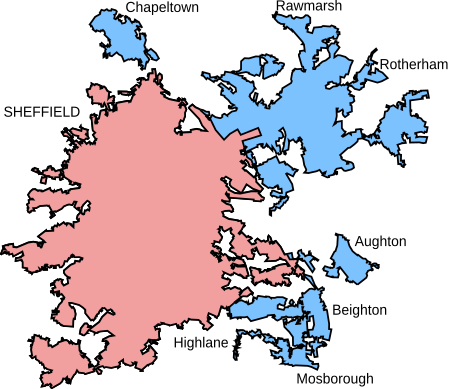Sheffield urban area

The Sheffield Urban Area is a conurbation in the North of England with a population of 685,368 according to the 2011 census. This was a 7% increase on the 2001 population of 640,720 making it the 8th largest conurbation in the United Kingdom and England's 6th largest. Named the Sheffield Urban Area by the Office for National Statistics, it must not be confused with the Sheffield City Region, a non-government term, although often used, particularly by the business community. In 2001 the population density of the urban area was 3,949.2 people per km2 by 2011 this had increased slightly to 4,092 people per km2.The city of Sheffield contributes just over two thirds of the population of the whole conurbation.
Excerpt from the Wikipedia article Sheffield urban area (License: CC BY-SA 3.0, Authors, Images).Sheffield urban area
Maxwell Street, Sheffield Burngreave
Geographical coordinates (GPS) Address Nearby Places Show on map
Geographical coordinates (GPS)
| Latitude | Longitude |
|---|---|
| N 53.395 ° | E -1.455 ° |
Address
Maxwell Street
Maxwell Street
S4 7PS Sheffield, Burngreave
England, United Kingdom
Open on Google Maps







